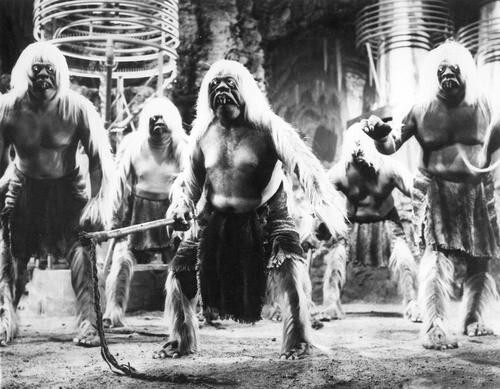Notifications


Posted by - Dynamic Trader -
on - March 14, 2023 -
Filed in - Economics -
262 Views - 0 Comments - 0 Likes - 0 Reviews

The Morlocks periodically rise above ground in hunting parties to kidnap and eat unsuspecting Eloi in this symbiotically vicious circle of life.
In the Time Machine, society one million years in the future has evolved into two separate species called Morlocks and Eloi. The Morlocks represent the ugly dirty producers who by this future age, all live under ground and run the world’s manufacturing. The Eloi are the effect of the inbreeding of the elite, who by this time are simple-minded, Aryan, above-ground dwellers living in idleness and consuming only what the Morlocks produce. What was the trade off?
The Morlocks periodically rise above ground in hunting parties to kidnap and eat unsuspecting Eloi in this symbiotically vicious circle of life.
This famous story was written by a young British writer in 1893 whose ideas and pioneering work in shaping new techniques of cultural warfare which profoundly affected the next 130 years of human history. These ideas led to the innovation of novel techniques of “predictive programming”, and to mass psychological warfare. In contrast to the optimistic views of mankind and the future potential envisioned by the great science fiction writer Jules Verne earlier, Wells’ misanthropic tales had the intended effect of reducing the creative potential and love of humanity that Verne’s work awoke.
While he is best known for such fiction works as The War of the Worlds, The World Set Free, The Invisible Man, The Island of Doctor Morrow, and The Time Machine, Wells’ lesser-known non-fiction writings like The Open Conspiracy, The New World Order, The Outline of History, The Science of Life and The World Brain served as guiding strategic blueprints for the entire 20th century war against sovereign nation states and the very idea of a society built on the premise of mankind made in the image of God.
Thomas Huxley’s Revolution
The members of the London-centered oligarchy to which Wells had devoted himself at an early age had found themselves stuck in a rut by the turn of the 19th century. These inbred families and retainers who managed the dying British Empire had long been encrusted by the vices of decadence by the time a young man of low breeding and high talent arose amidst the London-ghettos treating syphilis patients as a surgeon’s assistant. This young surgeon’s name was Thomas Huxley.
Huxley possessed a sardonic wit, a deep misanthropy, and an intelligence that were soon discovered by powerful patrons, and by his mid-20’s, this young man found himself a rising star in Britain’s Royal Academy of Science. Here he quickly became a leading creative force, shaping Britain’s powerful X Club, serving as Darwin’s bulldog promoting popular debates featuring himself against literalist members of the clergy. In these debates he argued for Darwin’s chaos-bound interpretation of evolution. He also founded Nature magazine as a propaganda instrument which has been used to enforce scientific consensus favorable to a world empire to this very day.
Huxley chose his opponents carefully, ensuring that he could easily and publicly obliterate the arguments of simple-minded Anglican clergy, and thus convince all onlookers that the only choice they had to account for the evolution of new species was either literal Biblical creationism or his brand of Darwinian evolution. The many alternative scientific theories of the 19th century (such as those found in the works of Karl Ernst von Baer, Georges Cuvier, Lamarck and James D. Dana) which accounted for both the evolution of species, and the harmonics of all parts to a whole, as well as creative leaps were forgotten amidst this false dichotomy which this author unpacked in a recent interview.

